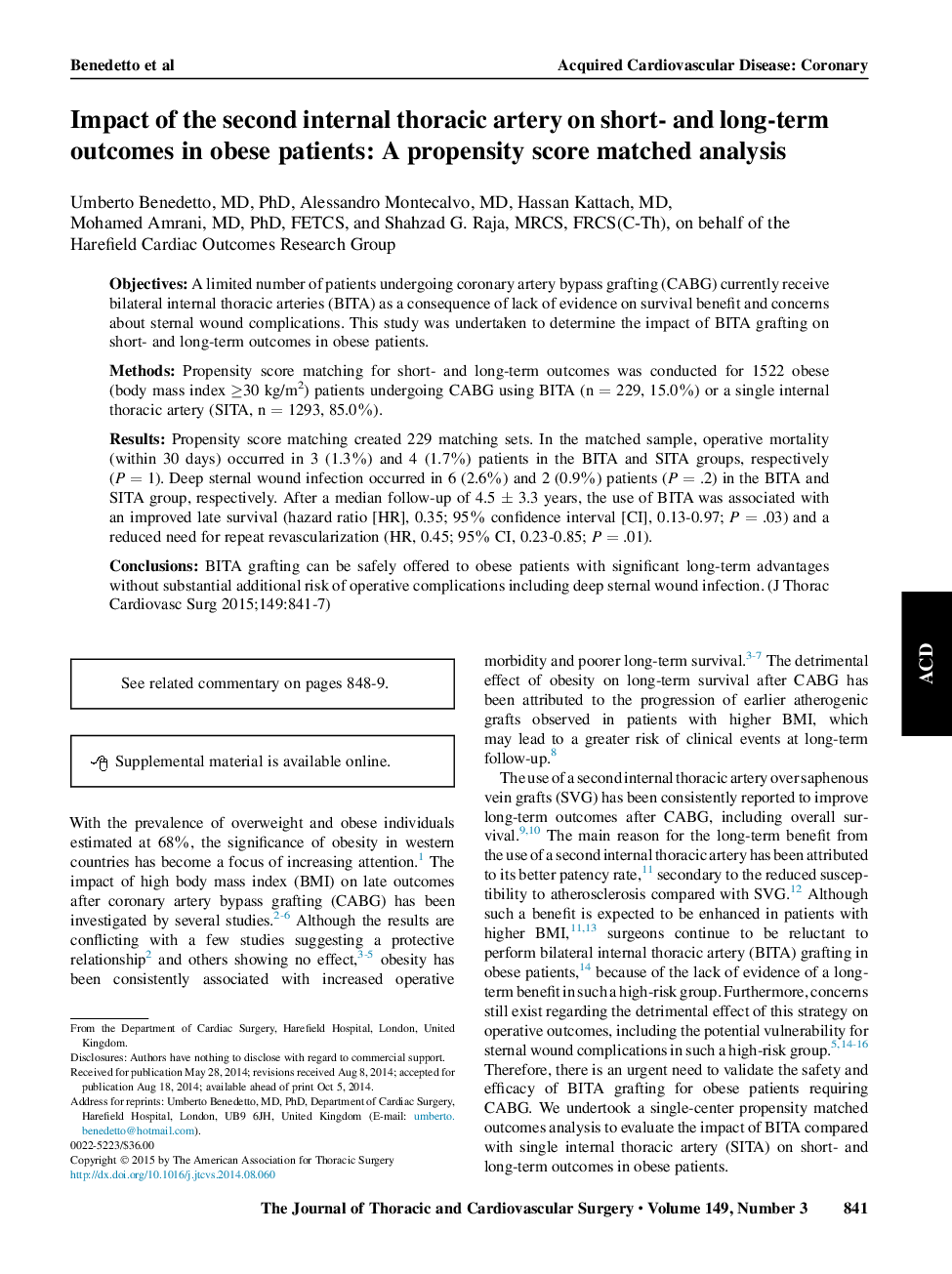| Article ID | Journal | Published Year | Pages | File Type |
|---|---|---|---|---|
| 5988925 | The Journal of Thoracic and Cardiovascular Surgery | 2015 | 9 Pages |
ObjectivesA limited number of patients undergoing coronary artery bypass grafting (CABG) currently receive bilateral internal thoracic arteries (BITA) as a consequence of lack of evidence on survival benefit and concerns about sternal wound complications. This study was undertaken to determine the impact of BITA grafting on short- and long-term outcomes in obese patients.MethodsPropensity score matching for short- and long-term outcomes was conducted for 1522 obese (body mass index â¥30 kg/m2) patients undergoing CABG using BITA (n = 229, 15.0%) or a single internal thoracic artery (SITA, n = 1293, 85.0%).ResultsPropensity score matching created 229 matching sets. In the matched sample, operative mortality (within 30 days) occurred in 3 (1.3%) and 4 (1.7%) patients in the BITA and SITA groups, respectively (P = 1). Deep sternal wound infection occurred in 6 (2.6%) and 2 (0.9%) patients (P = .2) in the BITA and SITA group, respectively. After a median follow-up of 4.5 ± 3.3 years, the use of BITA was associated with an improved late survival (hazard ratio [HR], 0.35; 95% confidence interval [CI], 0.13-0.97; P = .03) and a reduced need for repeat revascularization (HR, 0.45; 95% CI, 0.23-0.85; P = .01).ConclusionsBITA grafting can be safely offered to obese patients with significant long-term advantages without substantial additional risk of operative complications including deep sternal wound infection.
